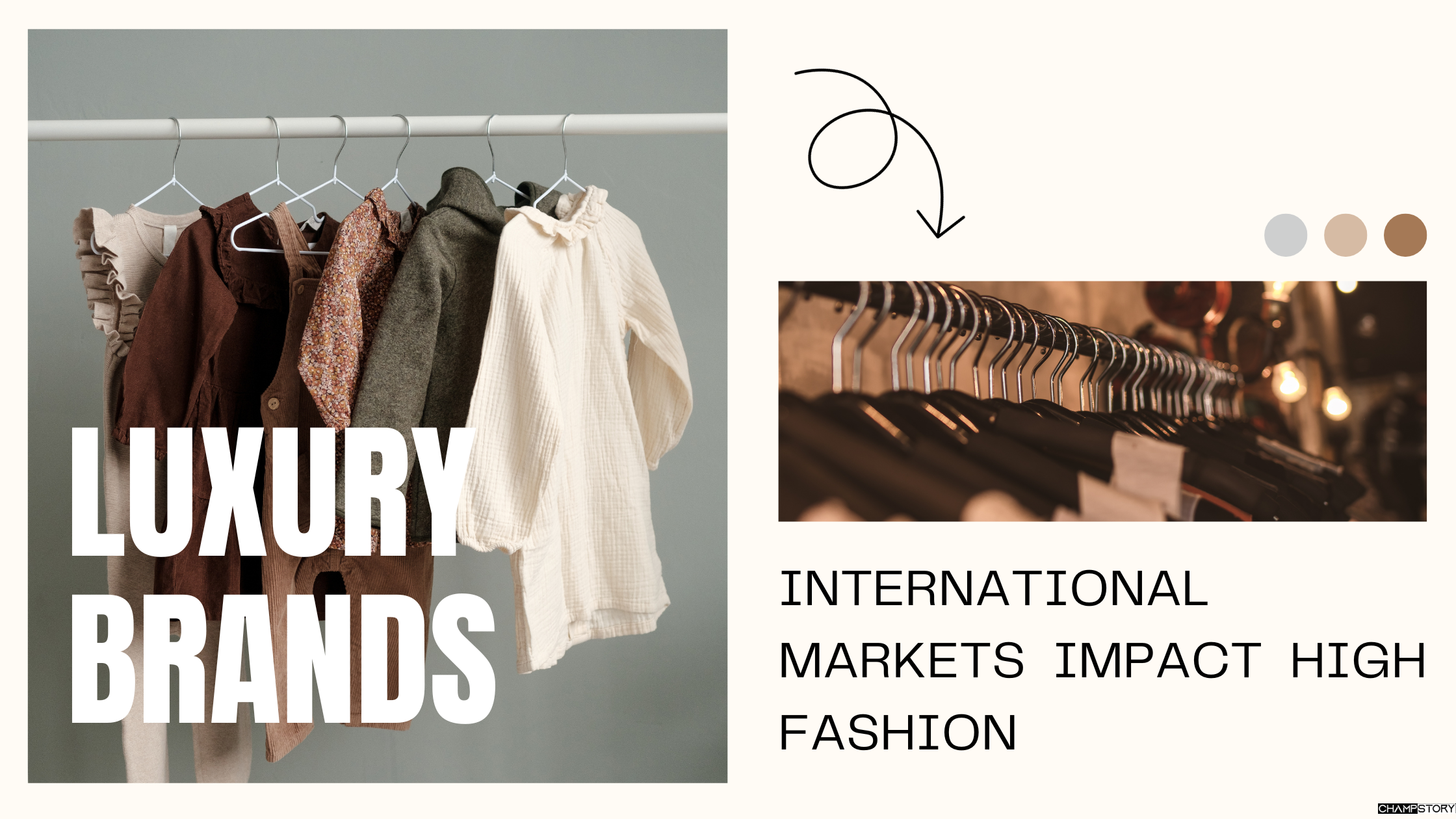

Luxury fashion has transcended its traditional boundaries and is now a global phenomenon. High-end brands that once catered primarily to elite clientele in their home countries are expanding their reach across international borders. This shift in the fashion landscape has not only reshaped the industry but also highlighted the intricate ways in which international markets impact high fashion.
The globalization of luxury fashion is a multifaceted phenomenon. Several key factors have contributed to this transformative shift:
Rapid economic growth in countries such as China, India, and Brazil has created a burgeoning middle class with increased purchasing power. As a result, these consumers are now seeking to flaunt their newfound affluence through luxury fashion.
The advent of e-commerce and digital marketing has made luxury brands more accessible to consumers around the world. Online shopping has eliminated geographical barriers, allowing anyone with an internet connection to browse and purchase high-end fashion.
Global tourism has played a pivotal role in exposing consumers to luxury brands. Tourists often seek out luxury shopping destinations like Paris, Milan, and New York, contributing significantly to the global luxury market.
Celebrities and influencers have a global reach through social media. Their partnerships with luxury brands create buzz and demand worldwide, inspiring consumers to invest in high fashion.
As luxury brands expand into international markets, they face both challenges and opportunities:
Successful global expansion requires an understanding of cultural nuances and preferences. What appeals to consumers in one country may not resonate with those in another. Brands must adapt their marketing strategies and product offerings accordingly.
The global reach of luxury brands has made them targets for counterfeiters. Protecting brand integrity and maintaining exclusivity while expanding can be a delicate balancing act.
International expansion also raises questions about sustainability and ethical practices. Consumers in different regions increasingly demand transparency regarding the production and sourcing of luxury goods.
Expanding into new markets can strain a brand’s supply chain and logistics. Ensuring that products reach consumers efficiently and without delays is critical to maintaining customer satisfaction.
Several cities have emerged as global luxury fashion hubs, influencing trends and shaping the market:
Dubai is known for its luxurious shopping malls and as a fashion-forward city in the Middle East. It attracts tourists and high-net-worth individuals, making it a significant luxury fashion market.
Shanghai’s fashion scene has exploded in recent years, with a thriving market for high-end brands. Luxury fashion shows and events in the city draw global attention.
Despite recent challenges, Hong Kong remains a key luxury shopping destination, particularly for Chinese tourists.
London’s combination of tradition and innovation has made it a hub for luxury fashion. It’s home to some of the world’s most prestigious brands and is a popular destination for luxury shoppers.
New York City continues to attract luxury shoppers from around the world. It is not only a fashion capital but also a hotspot for luxury brand headquarters.
The globalization of luxury fashion also brings with it a responsibility to address sustainability and ethical concerns. Luxury brands are increasingly embracing sustainability initiatives, from eco-friendly materials to ethical labor practices. The demand for responsible luxury is growing, and brands that fail to adapt risk alienating a socially conscious consumer base.
In conclusion, the international expansion of luxury brands has forever changed the fashion landscape. As luxury fashion becomes more accessible to consumers worldwide, it encounters both challenges and opportunities. The cultural, economic, and technological factors driving this transformation are shaping the industry’s future. To thrive in this globalized era, luxury brands must navigate the complexities of international markets while staying true to their values and commitment to quality. The intersection of luxury and global influence continues to redefine what high fashion means in a rapidly changing world.
In today's digital marketplace, turning clicks into customers is the ultimate goal of any online… Read More
When it comes to vehicle safety and performance, choosing the right tires is paramount. However,… Read More
Introduction In recent years, healthcare has undergone a remarkable transformation driven by advancements in technology,… Read More
Introduction: When it comes to protecting your home, having the right insurance coverage is essential.… Read More
Introduction: As the [Case Name] trial nears its conclusion, jury deliberations have commenced following the… Read More
Introduction Q&A sessions are a powerful tool for fostering engagement and interaction between speakers and… Read More
This website uses cookies.